- Magnolia: Planting and Care
- Choosing the Right Location
- Preparing the Soil
- Planting the Magnolia
- Watering and Fertilizing
- Pruning and Maintenance
- Conclusion
- Garden Magnolias
- Types and Varieties
- Planting and Care
- Pruning
- Pests and Diseases
- In Conclusion
- Magnolia Tree Care
- Planting Magnolia Trees
- Watering
- Fertilizing
- Pruning
- Pest and Disease Control
- Winter Protection
- Conclusion
- Magnolia: Types and Varieties
- 1. Japanese Magnolia (Magnolia kobus)
- 2. Saucer Magnolia (Magnolia x soulangeana)
- 3. Southern Magnolia (Magnolia grandiflora)
- 4. Cucumber Tree (Magnolia acuminata)
- 5. Yulan Magnolia (Magnolia denudata)
- 6. Star Magnolia (Magnolia stellata)
- 7. Loebner Magnolia (Magnolia x loebneri)
- Southern Magnolia
- Overview
- Characteristics
- Planting and Care
- Types and Varieties
- Conclusion
- Saucer Magnolia
- Characteristics
- Cultivation
- Varieties
- Star Magnolia
- Overview
- Appearance
- Growing Conditions
- Propagation
- Care
- Varieties
- Conclusion
- Japanese Magnolia
- Characteristics
- Care
- Varieties
- Conclusion
- YourSiteName
- About YourSiteName
- Our Mission
- What We Offer
- Why Choose YourSiteName
- Get Started Today
- Questions and Answers:
- When is the best time to plant magnolias?
- Can magnolias tolerate full sun?
- How often should I water my magnolia tree?
- What type of soil do magnolias prefer?
- How tall do magnolia trees usually grow?
- Do magnolia trees need to be pruned?
- Videos: Types of Magnolia Trees & How to Care for Them | P. Allen Smith (2020)
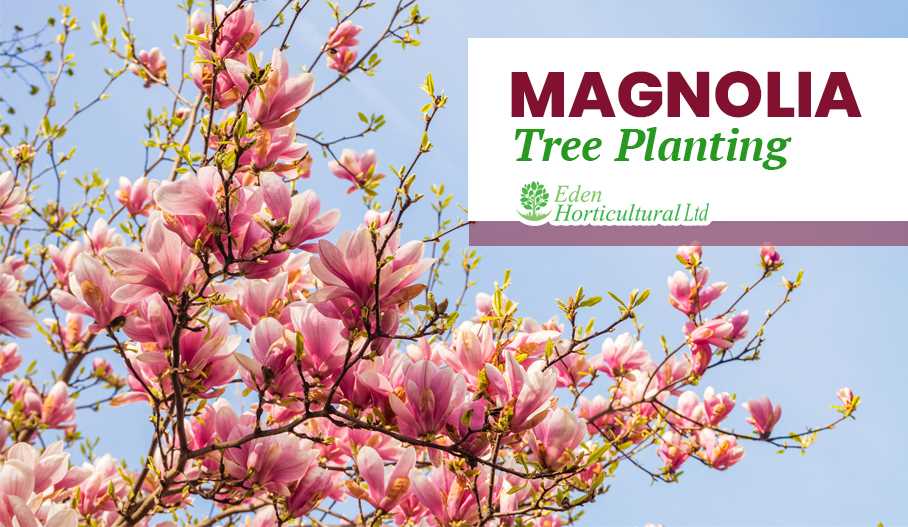
Magnolias are breathtakingly beautiful flowering plants that can add a touch of elegance and sophistication to any garden. With their stunning blooms and fragrant flowers, magnolias are often considered a symbol of purity and nobility. If you’re thinking about adding magnolias to your garden, it’s important to understand how to plant and care for them properly.
One of the first things to consider when planting magnolias is the location. Magnolias thrive in well-drained soil and prefer a sunny or partially shaded spot. They can be planted as standalone trees or used as ornamental plants in a mixed border. Before planting, it’s crucial to prepare the soil by removing any weeds and adding organic matter to improve its fertility.
When it comes to care, magnolias appreciate regular watering, especially during dry spells. However, it’s important not to over-water them, as excessive moisture can lead to root rot. Mulching around the base of the tree can help retain moisture and prevent weed growth. Pruning is another aspect of magnolia care that should not be overlooked. Pruning should be done in late winter or early spring to remove dead or damaged branches and shape the tree.
There are several types and varieties of magnolias to choose from, each with its own unique characteristics. Some popular types include the Southern magnolia (Magnolia grandiflora), which is known for its large, glossy leaves and creamy white flowers, and the Saucer magnolia (Magnolia x soulangeana), which boasts large, cup-shaped flowers in shades of pink and white. Whether you prefer a compact shrub or a towering tree, there’s a magnolia variety out there to suit your needs.
In conclusion, planting and caring for magnolias can be a rewarding experience for any gardener. With their stunning beauty and captivating fragrance, magnolias are sure to become a focal point of your garden. Just remember to choose the right location, provide adequate care, and select the perfect variety for your preferences. Soon enough, you’ll be enjoying the magnificent blooms and timeless charm of these extraordinary plants.
Magnolia: Planting and Care
Magnolias are beautiful flowering trees and shrubs that are renowned for their large, showy blossoms. They come in a variety of colors and sizes, making them a popular choice for gardens and landscapes. Planting and caring for magnolias is relatively easy, but there are a few key steps to ensure their success.
Choosing the Right Location
Magnolias prefer a location with full sun or partial shade. They thrive in well-drained soil that is slightly acidic to neutral in pH. It’s important to choose a location that provides enough room for the magnolia to grow to its full size without being crowded by other plants or structures.
Preparing the Soil
Before planting a magnolia, it’s a good idea to prepare the soil to ensure optimal growth. Start by removing any weeds, rocks, or debris from the planting area. Then, loosen the soil using a garden fork or tiller to improve its texture and drainage. Adding organic matter, such as compost or aged manure, can also help improve the soil’s fertility.
Planting the Magnolia
When you’re ready to plant the magnolia, dig a hole that is twice as wide and just as deep as the tree’s root ball. Gently remove the magnolia from its container and place it in the hole, making sure that the top of the root ball is level with or slightly above the soil surface. Backfill the hole with soil, firming it gently to eliminate any air pockets. Water the tree thoroughly after planting to help settle the soil.
Watering and Fertilizing
After planting, it’s important to water the magnolia regularly, especially during dry spells or in hot weather. Ideally, the soil should be kept consistently moist but not waterlogged. Applying a layer of mulch around the base of the magnolia can help retain moisture and regulate soil temperature. Additionally, it’s recommended to fertilize the magnolia in early spring and late summer with a balanced, slow-release fertilizer.
Pruning and Maintenance
Magnolias generally require minimal pruning and maintenance. However, you may need to remove any dead or damaged branches to improve the tree’s appearance and health. It’s best to prune magnolias after they have finished flowering to avoid disrupting their bloom cycle. Regularly inspect the tree for signs of pests or diseases, and take appropriate action if necessary.
Conclusion
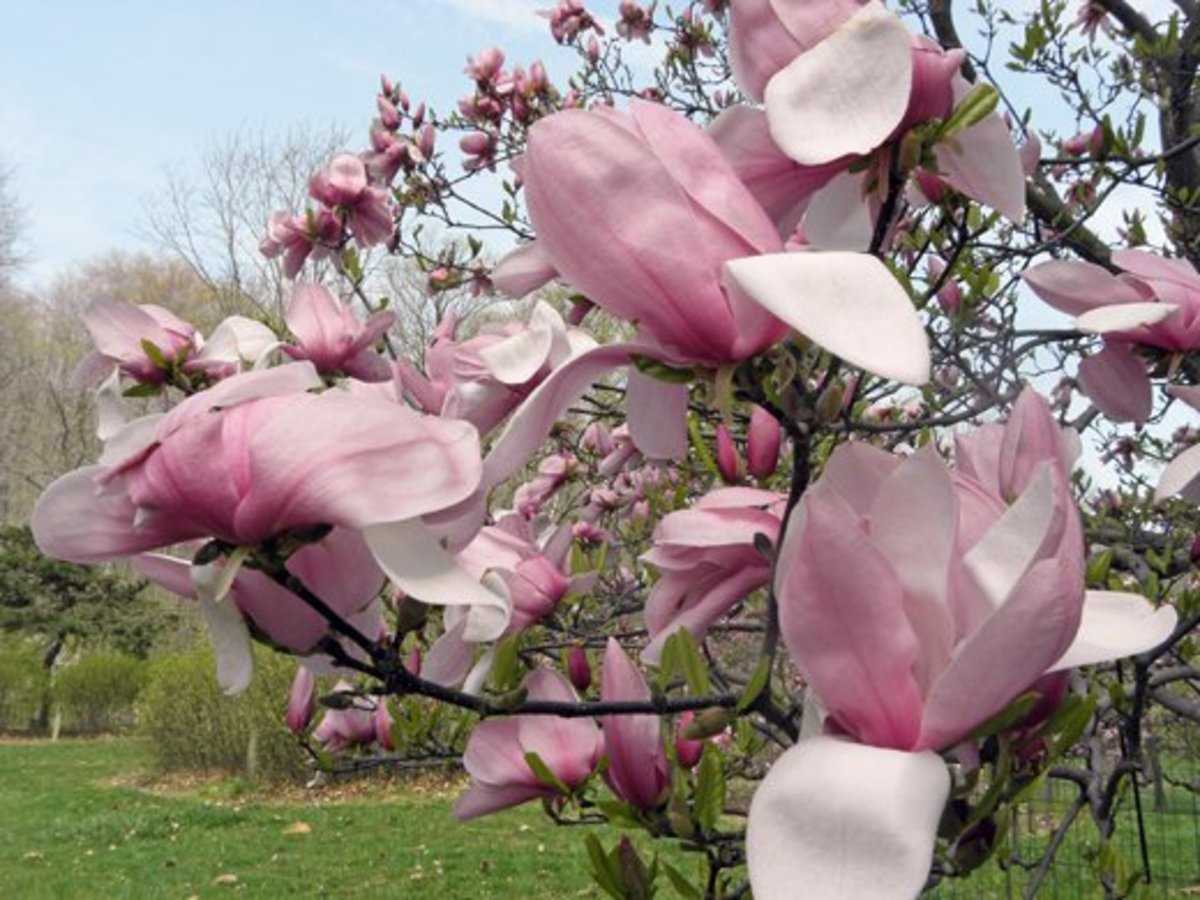

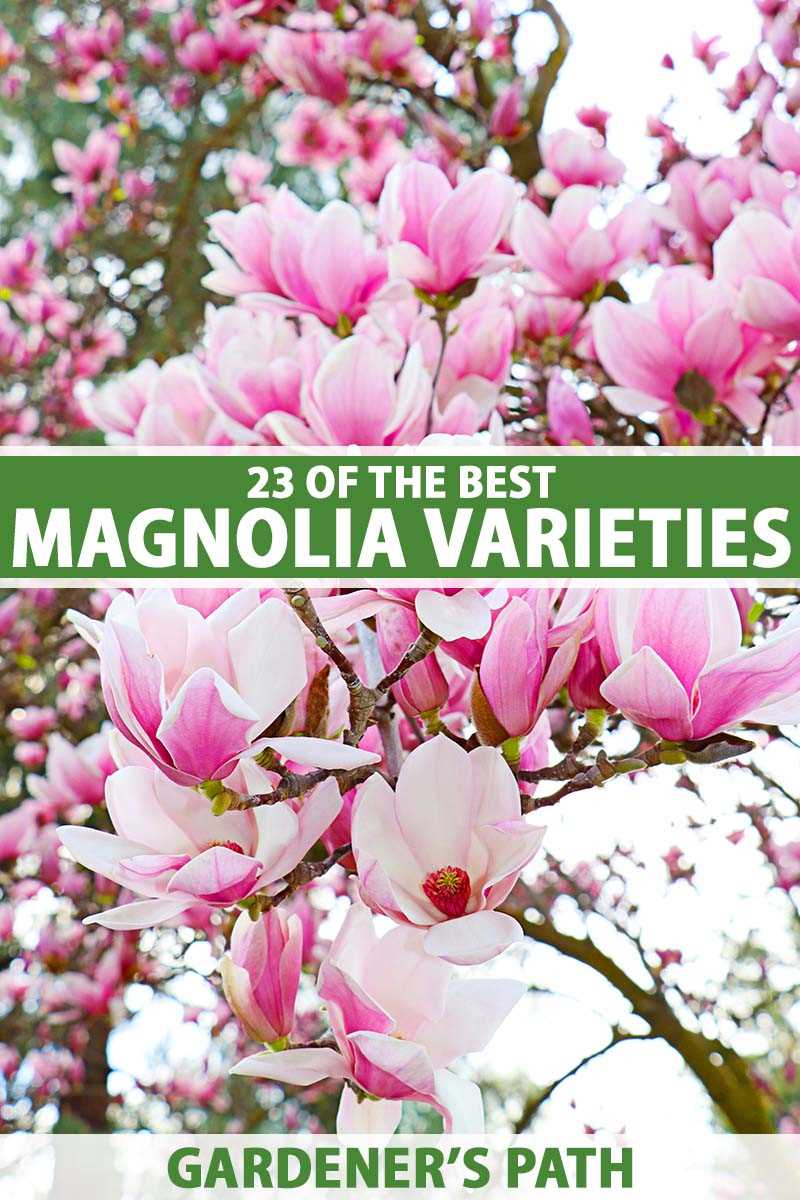

By following these planting and care tips, you can enjoy the beauty of magnolias in your garden or landscape. Remember to choose an appropriate location, prepare the soil, plant the magnolia properly, and provide adequate water and fertilizer. With proper care, magnolias can thrive and become a stunning focal point in your outdoor space.
Garden Magnolias
Magnolias are beautiful flowering trees that can bring a touch of elegance to any garden. With their large, showy blooms and attractive foliage, magnolias are highly sought after by gardeners around the world. Here is everything you need to know about planting and caring for garden magnolias.
Types and Varieties
There are many different types and varieties of magnolias to choose from, each with its own unique characteristics. Some popular garden magnolia varieties include:
- Southern Magnolia (Magnolia grandiflora): Known for its large, fragrant white flowers and glossy green leaves, the Southern Magnolia is one of the most iconic magnolia varieties.
- Japanese Magnolia (Magnolia kobus): This variety features white or pink flowers that bloom in early spring before the leaves appear.
- Saucer Magnolia (Magnolia × soulangeana): Saucer Magnolia is a hybrid variety that produces large, cup-shaped flowers in various shades of pink and purple.
- Star Magnolia (Magnolia stellata): Star Magnolia is known for its star-shaped, fragrant white flowers that bloom in early spring.
Planting and Care
When planting a magnolia tree in your garden, it is important to choose a suitable location. Magnolias thrive in well-drained soil and prefer a spot with full sun or partial shade. Here are some key tips for planting and caring for garden magnolias:
- Prepare the soil: Before planting, prepare the soil by loosening it and incorporating organic matter.
- Dig the hole: Dig a hole that is wider and shallower than the root ball of the magnolia tree.
- Plant the tree: Place the magnolia tree in the hole, making sure the root ball is level with or slightly above the soil surface.
- Fill the hole: Backfill the hole with soil, gently firming it around the roots.
- Water regularly: Keep the soil evenly moist, but not waterlogged, especially during the first year after planting.
Pruning
Pruning is an important part of magnolia tree care. Prune your magnolia tree in late winter or early spring before the new growth begins. Remove any dead, damaged, or diseased branches, as well as any crossing or rubbing branches. Trim the tree to maintain its desired shape and size, but be careful not to over-prune, as this can inhibit flowering.
Pests and Diseases
Magnolias are generally low-maintenance trees, but they can be susceptible to certain pests and diseases. Some common issues include scale insects, aphids, leaf spot, and powdery mildew. Regular inspection and early detection are key to managing any pest or disease problems. Consult with a local gardening expert or arborist for specific recommendations based on your region.
In Conclusion
Garden magnolias are stunning trees that can enhance the beauty of any garden. By selecting the right variety, providing proper care, and addressing any potential issues, you can enjoy the magnificent blooms and lush foliage of magnolias for years to come.
Magnolia Tree Care
Planting Magnolia Trees
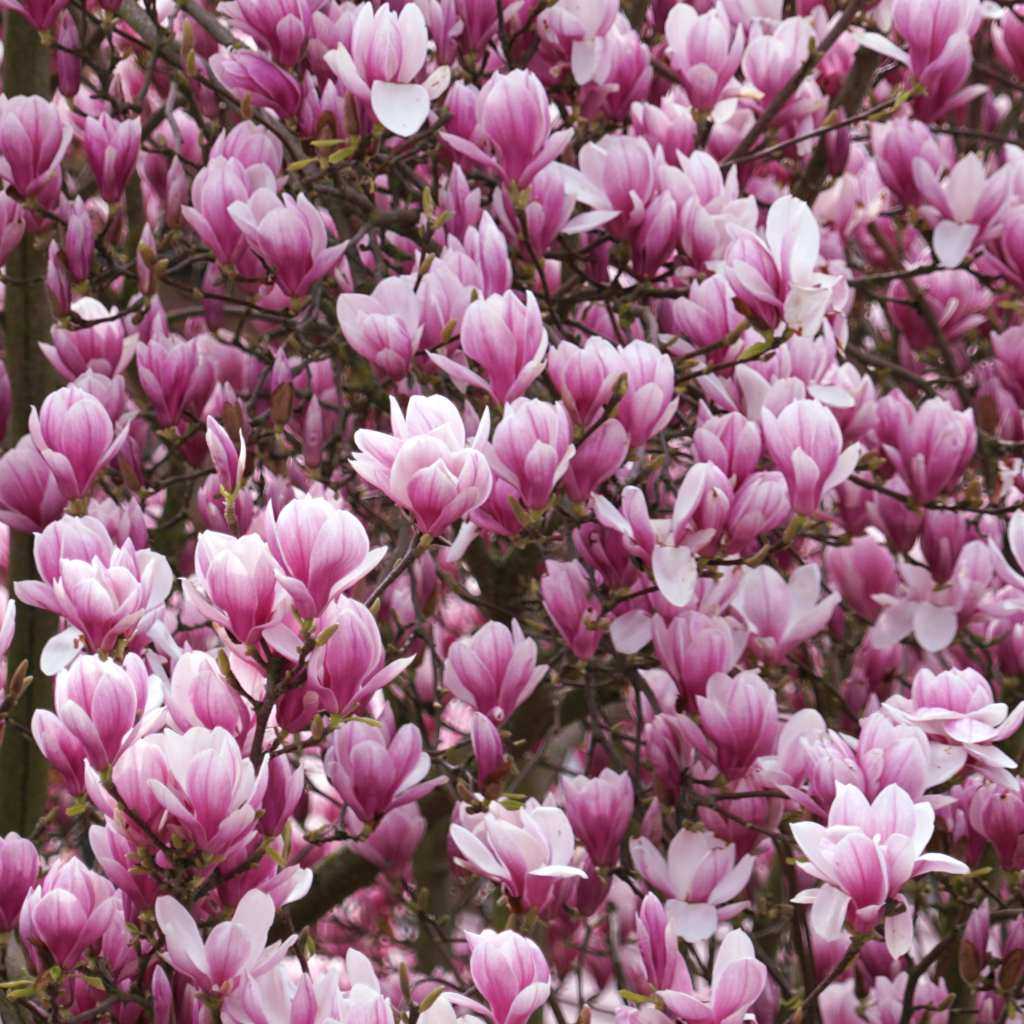

When planting a magnolia tree, it’s important to choose the right location. Magnolias prefer full sun or partial shade and well-draining soil. Dig a hole that is twice as wide and slightly deeper than the root ball of the tree. Place the tree in the hole, making sure that the top of the root ball is level with or slightly above the soil surface. Backfill the hole with soil, firming it gently around the roots. Water the tree thoroughly after planting.
Watering
Proper watering is essential for the health of magnolia trees. During the first year after planting, water the tree deeply once a week, especially during hot and dry periods. After the first year, watering can be reduced to once every two weeks, unless there is a drought or the tree is showing signs of stress. Avoid over-watering, as magnolias are prone to root rot.
Fertilizing
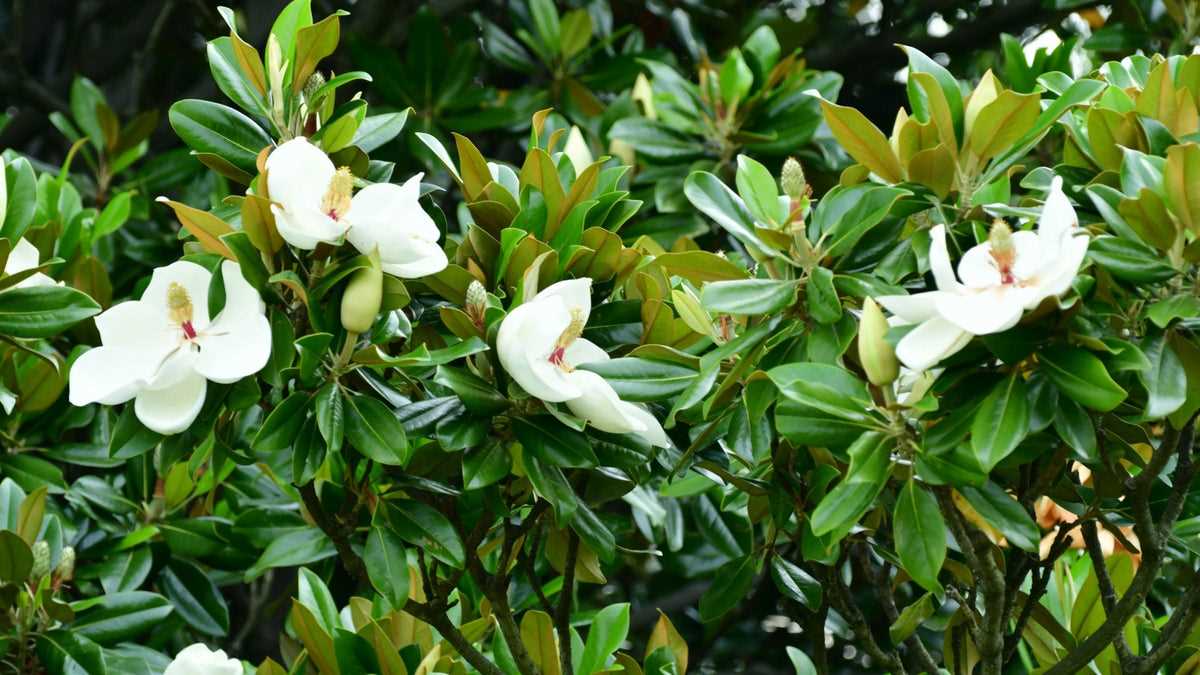

Magnolias do not require a lot of fertilizer, but a light application in early spring can help promote healthy growth. Use a balanced, slow-release fertilizer and follow the package instructions for the proper amount to apply. Avoid fertilizing in late summer or fall, as this can stimulate new growth that may not have time to harden off before winter.
Pruning
Magnolia trees generally require minimal pruning. Remove any dead, damaged, or diseased branches as soon as you notice them. Prune the tree in early spring before new growth begins. Remove any crossed branches or branches that are growing too close together to promote good airflow and reduce the risk of disease. Always use sharp and clean pruning tools to prevent damage to the tree.
Pest and Disease Control
Magnolia trees are relatively pest and disease resistant, but they can still be affected by certain issues. Common pests that may infest magnolia trees include scale insects, aphids, and magnolia scale. Regularly inspect the tree for any signs of pests and treat them accordingly. Diseases such as powdery mildew and leaf spot can also occur, especially in humid conditions. Proper watering and good airflow can help prevent these diseases.
Winter Protection
Magnolia trees are generally hardy, but some varieties may need some winter protection in colder regions. Mulch around the base of the tree in late fall to help insulate the roots and protect them from freezing temperatures. You can also wrap the branches with burlap or similar material to protect them from strong winds and snow.
Conclusion
Caring for a magnolia tree involves providing it with the right conditions, regular watering, minimal pruning, and protection during harsh winters. By following these care tips, you can enjoy the beauty and fragrance of magnolia trees in your garden for years to come.
Magnolia: Types and Varieties
Magnolias are beautiful flowering trees that belong to the Magnoliaceae family. There are numerous varieties and cultivars of magnolias, each with its unique characteristics and features. Here are some popular types of magnolias you can consider for your garden:
1. Japanese Magnolia (Magnolia kobus)
The Japanese magnolia is a small to medium-sized tree that produces stunning pink or white flowers in early spring, before the leaves appear. It is known for its graceful shape and delicate fragrance.
2. Saucer Magnolia (Magnolia x soulangeana)
The saucer magnolia is a popular hybrid magnolia that produces large, saucer-shaped flowers in various shades of pink and white. This variety is a favorite among gardeners for its vibrant blooms and attractive foliage.
3. Southern Magnolia (Magnolia grandiflora)
The southern magnolia is a large evergreen tree that features glossy, dark green leaves and large, fragrant white flowers. It is a majestic tree that is often used as a specimen tree in landscapes.
4. Cucumber Tree (Magnolia acuminata)
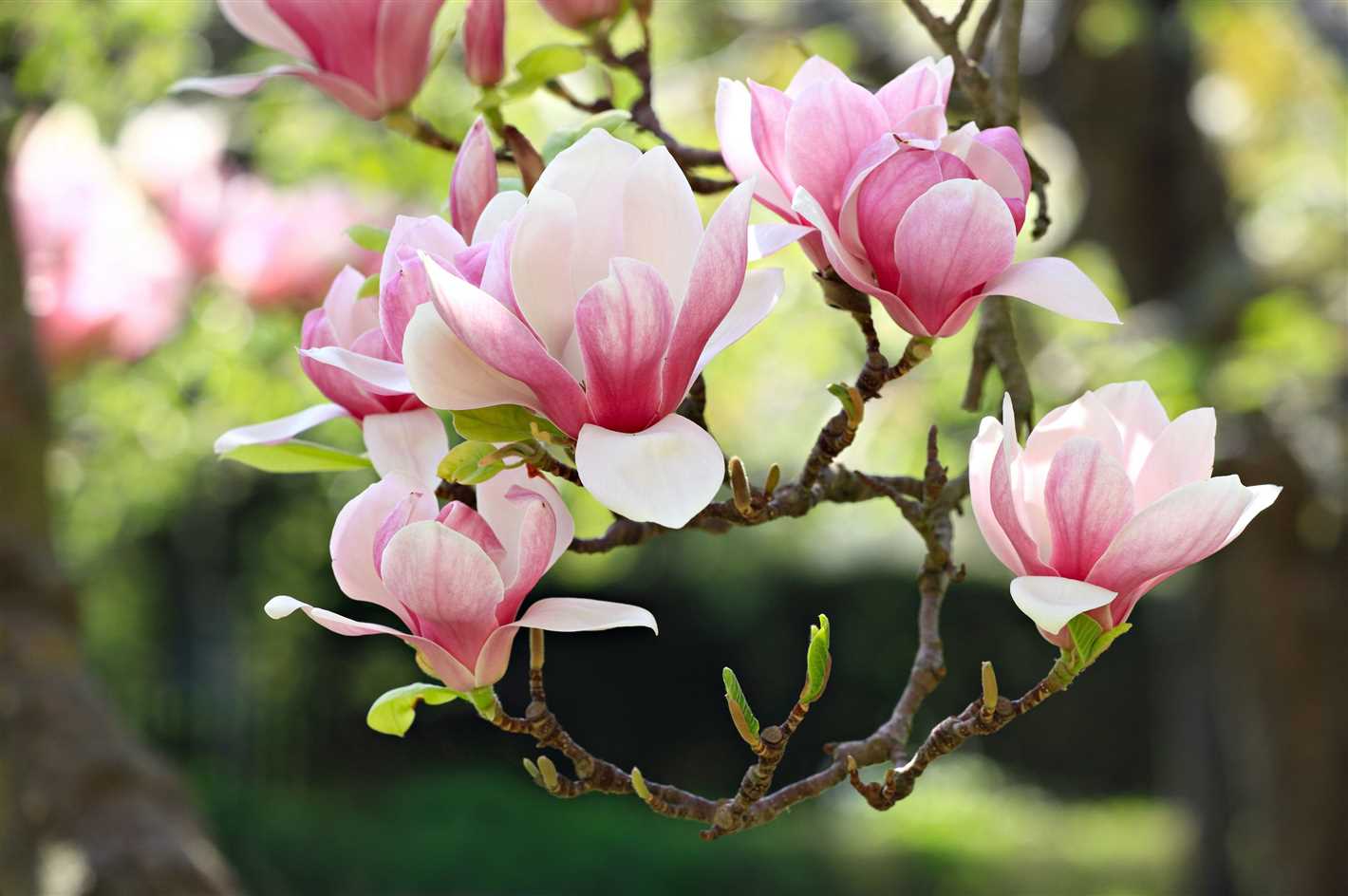

The cucumber tree is a tall deciduous tree with unique yellow-green flowers that have a cucumber-like fragrance. It is valued for its ornamental qualities and can add a touch of elegance to any garden.
5. Yulan Magnolia (Magnolia denudata)
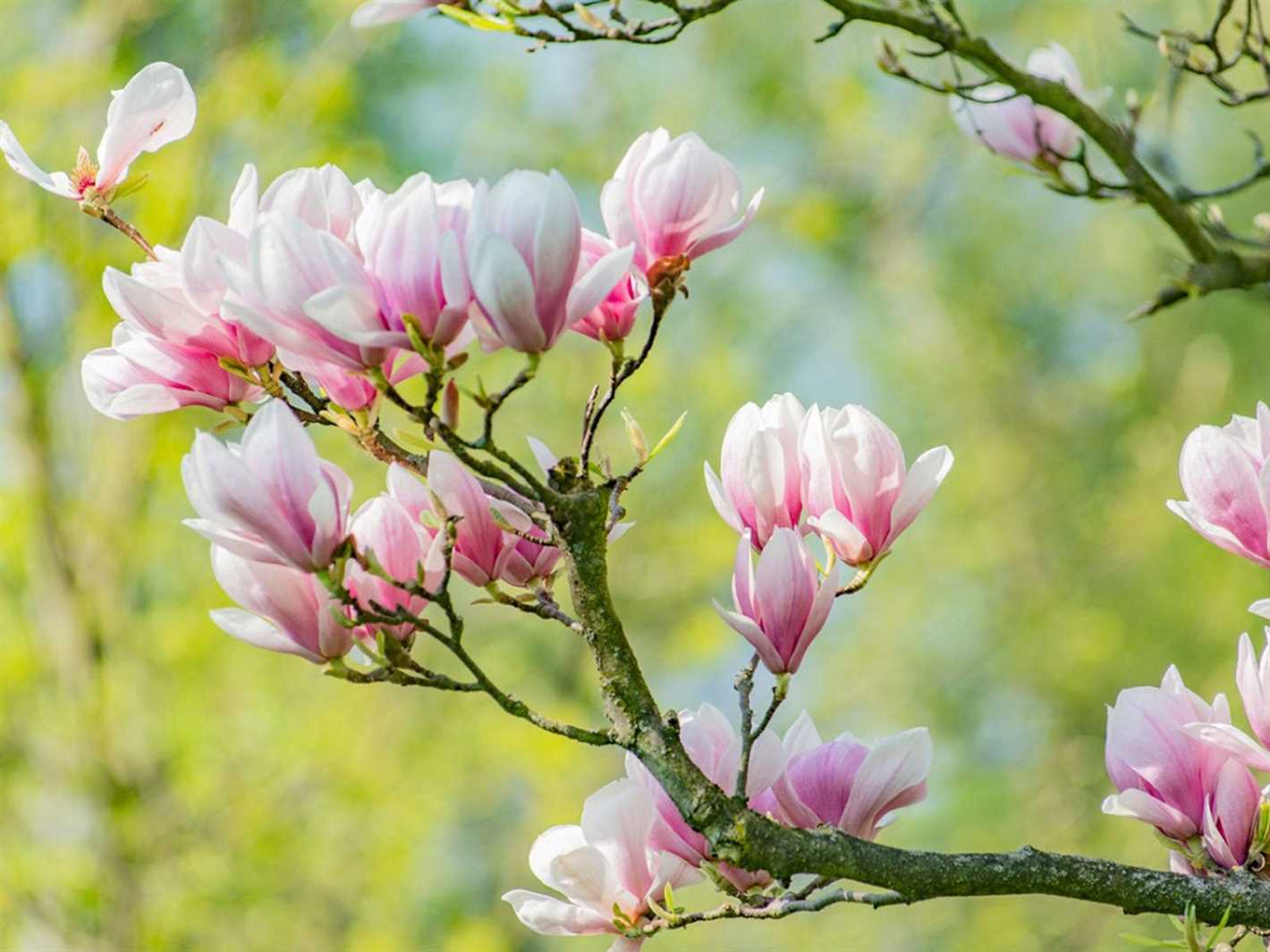

The yulan magnolia is a small to medium-sized tree with showy white flowers that have a sweet fragrance. It is one of the oldest known species of magnolias and is widely celebrated in Chinese culture.
6. Star Magnolia (Magnolia stellata)
The star magnolia is a small tree or large shrub that produces star-shaped flowers in white or light pink. It is a popular choice for small gardens or as a focal point in landscapes due to its compact size and early bloom time.
7. Loebner Magnolia (Magnolia x loebneri)
The Loebner magnolia is a hybrid between M. kobus and M. stellata. It produces fragrant, white or pale pink flowers in early spring. This variety is known for its cold-hardiness and beauty.
In addition to these, there are many other types and varieties of magnolias available, including the Bigleaf Magnolia, the Umbrella Magnolia, and the Cucumbertree Magnolia. Each variety offers its unique combination of flower color, fragrance, and growth habit, allowing you to find the perfect magnolia for your garden.
If you’re interested in growing magnolias in your garden, it’s essential to research the specific requirements and care instructions for the particular variety you choose. This will ensure that your magnolia thrives and brings beauty to your outdoor space for years to come.
Southern Magnolia
Overview
The Southern Magnolia, also known as Magnolia grandiflora, is a beautiful and iconic tree native to the southeastern United States. It is known for its large, fragrant flowers and glossy evergreen leaves. This tree is a popular choice for gardens and landscapes due to its ornamental value and ability to provide shade.
Characteristics
- The Southern Magnolia is a medium to large-sized tree that can reach heights of up to 80 feet.
- It has large, leathery leaves that are dark green on the upper surface and brownish on the underside.
- The tree produces large, white, fragrant flowers that can measure up to 12 inches in diameter.
- These flowers are followed by cone-like fruits that contain red seeds.
- The tree has a dense and pyramidal shape, with a rounded crown.
Planting and Care
When planting a Southern Magnolia, it is important to choose a location that receives full sunlight or partial shade. The tree prefers well-drained soil and should be planted in an area with plenty of space for its roots to grow.
Regular watering is essential for the establishment of the tree, especially during dry periods. Once established, the Southern Magnolia is drought-tolerant and requires less frequent watering.
Pruning is generally not necessary for the Southern Magnolia, as it naturally forms a well-shaped and attractive canopy. However, if pruning is desired, it should be done in late winter or early spring.
Types and Varieties
There are several popular cultivars of Southern Magnolia, each with its own unique characteristics:
- ‘Bracken’s Brown Beauty’: This variety has a more compact habit and smaller leaves compared to the species.
- ‘Little Gem’: A smaller variety that is suitable for smaller landscapes or container planting.
- ‘Edith Bogue’: Known for its cold hardiness and ability to tolerate various soil conditions.
- ‘D.D. Blanchard’: This cultivar has a dense and upright growth habit with large, dark green leaves.
Conclusion
The Southern Magnolia is a stunning tree that adds beauty and elegance to any garden or landscape. With its large flowers, glossy leaves, and delightful fragrance, it is sure to be a focal point in any outdoor space. Whether planted as a single specimen or in a row for a dramatic effect, the Southern Magnolia is a true Southern classic.
Saucer Magnolia
Saucer Magnolia, also known as Magnolia x soulangiana, is a beautiful flowering tree that is popular in gardens and landscapes. It belongs to the family Magnoliaceae and is a hybrid between Magnolia denudata and Magnolia liliiflora. Saucer Magnolia is native to China and was introduced to Europe in the 19th century.
Characteristics
- Saucer Magnolia is a deciduous tree that can reach a height of 20-30 feet.
- It has large, showy flowers that bloom in early spring before the leaves appear.
- The flowers are white, pink, or purple, and have a distinctive saucer-like shape, hence the name Saucer Magnolia.
- The leaves are oval-shaped and green in color. They turn yellow in the fall.
- The tree has a spreading habit and a rounded crown.
Cultivation
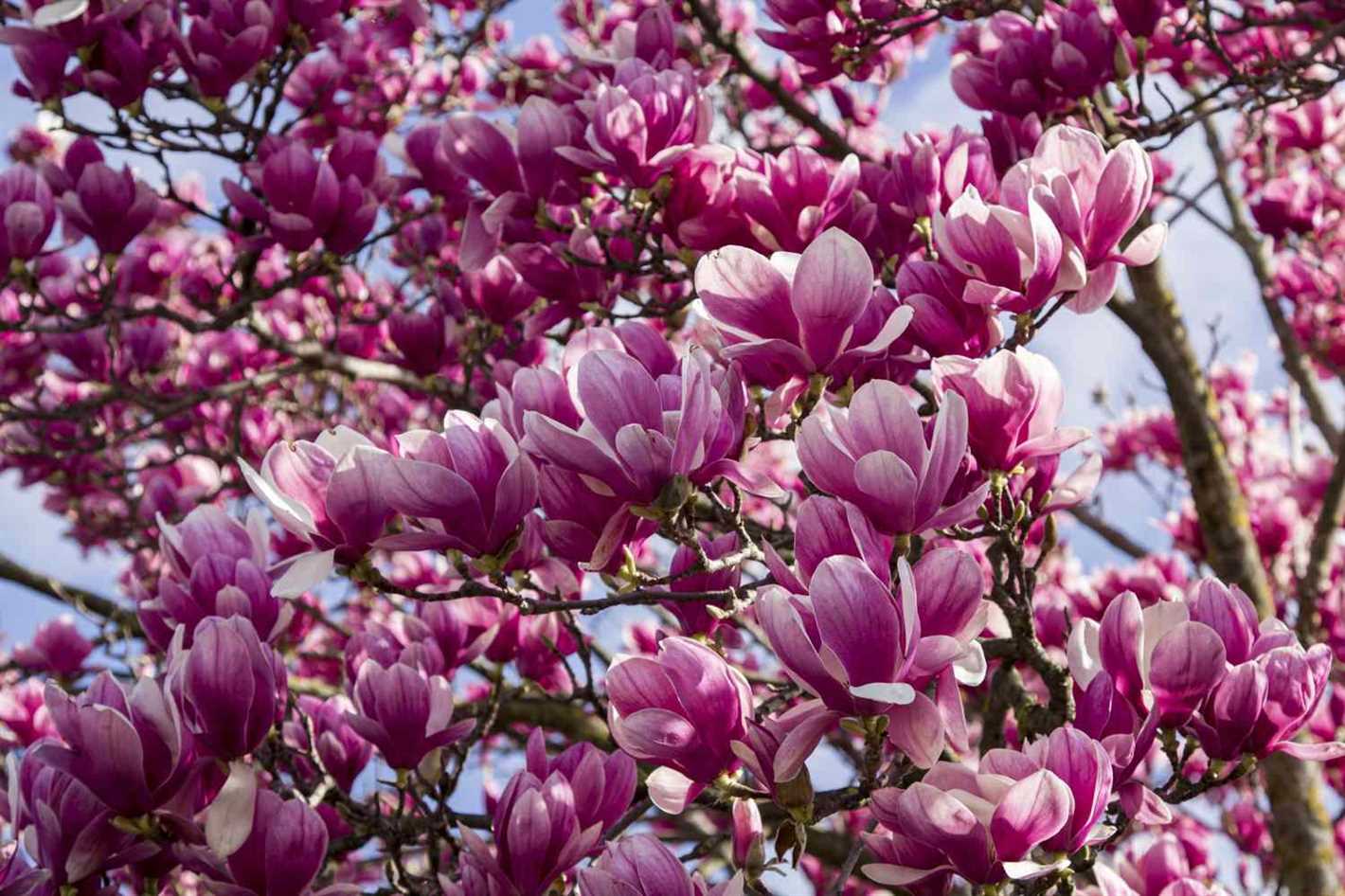

Saucer Magnolia is a relatively easy tree to grow and maintain. Here are some tips for its cultivation:
- Choose a location with well-draining soil and full sun to partial shade.
- Dig a hole that is two to three times wider than the root ball of the tree.
- Place the tree in the hole and backfill with soil, making sure the tree is planted at the same depth as it was in the container.
- Water the tree regularly, especially during dry periods.
- Apply a layer of organic mulch around the base of the tree to help retain moisture and suppress weeds.
- Prune the tree after flowering to maintain its shape and remove any dead or damaged branches.
- Fertilize the tree in early spring with a balanced fertilizer to promote healthy growth and flowering.
Varieties
There are several popular varieties of Saucer Magnolia to choose from:
| Variety | Flower Color | Height |
|---|---|---|
| ‘Alexandrina’ | Pink | 20-25 feet |
| ‘Lennei’ | Reddish-purple | 15-20 feet |
| ‘Rustica Rubra’ | Deep rose-purple | 25-30 feet |
Each variety has its own unique characteristics and can add beauty and interest to your garden.
In conclusion, Saucer Magnolia is a stunning flowering tree that can enhance the beauty of any garden or landscape. With its large, saucer-shaped flowers and graceful form, it is a true standout. By following the proper cultivation techniques and choosing the right variety, you can enjoy the beauty of Saucer Magnolia for many years to come.
Star Magnolia
Overview
The Star Magnolia is a popular flowering plant in the Magnolia family, known for its beautiful star-shaped flowers. It is a deciduous shrub or small tree that can grow up to 20 feet tall. The Star Magnolia is native to Japan and is commonly found in gardens and landscapes around the world due to its ornamental value.
Appearance
The Star Magnolia has a compact, rounded form with multiple branches. The leaves are dark green, oval-shaped, and alternately arranged on the branches. It produces large, fragrant flowers in early spring, before the leaves emerge. The flowers have bright white petals that are shaped like stars, hence the name. They have a pleasant fragrance and attract bees and butterflies.
Growing Conditions
The Star Magnolia thrives in full sun or partial shade. It prefers well-drained, acidic soil, but can tolerate a range of soil types. It is important to provide regular watering, especially during dry periods, to keep the plant healthy. The Star Magnolia is hardy and can withstand cold temperatures, making it suitable for various climates.
Propagation
The Star Magnolia can be propagated through seeds, cuttings, or grafting. To grow from seeds, collect the seedpods after they mature in the fall and plant them in a seed tray. The seeds should be sown shallowly and kept moist until they germinate. Cuttings can be taken in early summer when the plant is actively growing. Dip the cut end in rooting hormone and plant it in a pot filled with a well-draining soil mix. Grafting is another method, where a scion from a desired Star Magnolia variety is inserted onto a rootstock.
Care
Regular pruning is recommended to maintain the shape and size of the Star Magnolia. Prune the plant after it has finished flowering, as it blooms on the previous year’s growth. Remove any dead or damaged branches and thin out crowded areas to improve air circulation. Mulching around the base of the plant can help retain moisture and suppress weed growth. Fertilize the Star Magnolia in early spring with a balanced, slow-release fertilizer to promote healthy growth.
Varieties
There are several popular varieties of Star Magnolia, including:
- Magnolia stellata ‘Royal Star’: This variety has double flowers with extra petals, giving them a fuller appearance.
- Magnolia stellata ‘Centennial’: This variety was developed to celebrate the centennial of the Brooklyn Botanic Garden. It has large, fragrant flowers.
- Magnolia stellata ‘Jane Platt’: This variety has slightly larger flowers than the typical Star Magnolia, with a more upright growth habit.
Conclusion
The Star Magnolia is a stunning plant that adds beauty and elegance to any garden. With its star-shaped flowers and attractive foliage, it is a popular choice for both landscape and container planting. With the right growing conditions and care, the Star Magnolia can thrive and provide years of enjoyment.
Japanese Magnolia
The Japanese magnolia, or Magnolia x soulangeana, is a beautiful flowering tree that is native to Japan, China, and Korea. It is a popular choice for gardens due to its stunning and fragrant flowers.
Characteristics
- The Japanese magnolia is a deciduous tree that can reach a height of 20 to 30 feet.
- It has large, showy flowers that come in shades of pink, purple, and white.
- The flowers bloom in early spring, before the leaves appear.
- The leaves are medium-sized, oval-shaped, and green in color.
- The tree has a rounded shape and a spreading habit.
Care
The Japanese magnolia is relatively easy to care for. Here are some tips to keep in mind:
- Plant the tree in well-draining soil that is rich in organic matter.
- Choose a location that receives full sun or partial shade.
- Water the tree regularly, especially during dry periods.
- Apply a layer of mulch around the base of the tree to help retain moisture and suppress weeds.
- Prune the tree in late winter or early spring to remove any dead or damaged branches.
Varieties
There are several popular varieties of Japanese magnolia, including:
- ‘Alexandrina’ – This variety has large, deep purple flowers.
- ‘Lennei’ – Known for its large, pink flowers.
- ‘Rustica Rubra’ – This variety has deep purple flowers with a hint of red.
- ‘Alba Superba’ – The flowers of this variety are pure white.
Conclusion
The Japanese magnolia is a stunning tree that can add beauty and fragrance to any garden. With proper care and maintenance, it will thrive and provide years of enjoyment.
YourSiteName
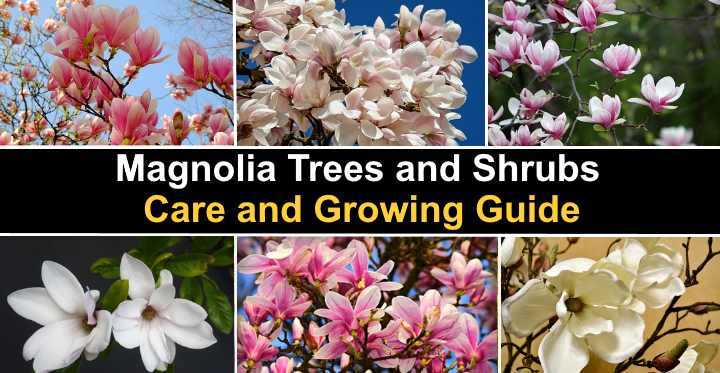

About YourSiteName
Welcome to YourSiteName – your ultimate resource for all things gardening. Whether you’re a seasoned gardener or just starting out, we have the information and tools you need to create a beautiful and thriving garden.
Our Mission
At YourSiteName, our mission is to inspire and educate gardeners of all levels. We believe that anyone can enjoy the benefits of gardening, regardless of their experience or space limitations. We aim to provide practical tips, expert advice, and valuable resources to help you create a garden that brings joy and beauty to your life.
What We Offer
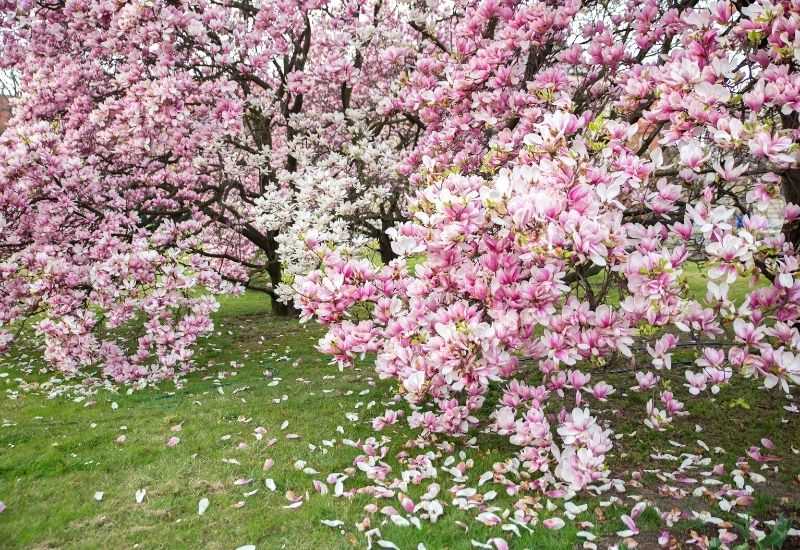

At YourSiteName, you will find a wide range of articles and guides on various gardening topics. From planting and caring for specific plants to designing a garden layout, we cover it all. Our comprehensive plant database provides detailed information on different plant varieties, including magnolias.
We also offer step-by-step tutorials and videos to guide you through various gardening tasks. Whether you need help with pruning, fertilizing, or dealing with common garden pests, our instructional content has got you covered.
Why Choose YourSiteName
There are several reasons why YourSiteName should be your go-to resource for gardening information:
- We have a team of experienced gardeners and horticulturists who provide expert advice and guidance.
- Our articles are based on scientific research and practical experience, ensuring that the information we provide is accurate and reliable.
- We offer a user-friendly interface and intuitive navigation, making it easy to find the information you need.
- Our community forum allows you to connect with other gardeners, ask questions, and share your gardening experiences.
Get Started Today
Ready to dive into the world of gardening? Take a look around our site and start exploring the articles, guides, and resources we have to offer. Don’t forget to sign up for our newsletter to receive regular updates and gardening tips straight to your inbox.
Join the YourSiteName community and embark on a journey of beauty, nature, and personal fulfillment through gardening. Let us help you create the garden of your dreams!
Questions and Answers:
When is the best time to plant magnolias?
The best time to plant magnolias is in the late winter or early spring, before the plant begins to actively grow.
Can magnolias tolerate full sun?
Most magnolias prefer partial shade, but they can also tolerate full sun as long as they are provided with adequate moisture.
How often should I water my magnolia tree?
Magnolia trees should be watered deeply once a week during hot, dry weather. However, they should not be overwatered as this can lead to root rot.
What type of soil do magnolias prefer?
Magnolias prefer well-draining soil that is slightly acidic. They like soil that is rich in organic matter, so it is a good idea to amend the soil with compost before planting.
How tall do magnolia trees usually grow?
The height of magnolia trees can vary depending on the variety, but they generally range from 15 to 30 feet tall. Some varieties can grow even taller.
Do magnolia trees need to be pruned?
Magnolia trees generally do not require pruning, but if necessary, it is best to prune them in late winter or early spring before new growth begins.







